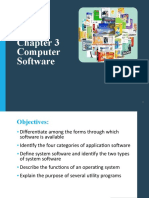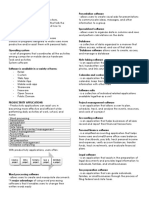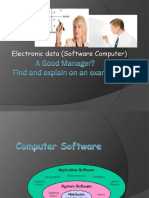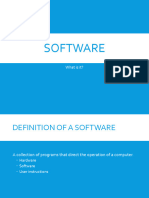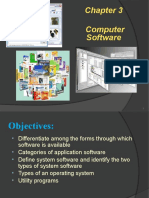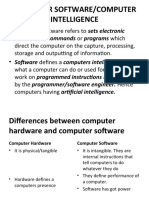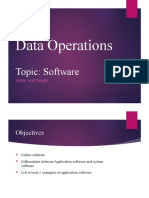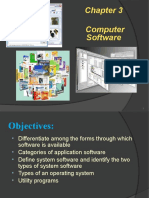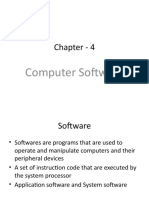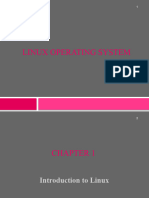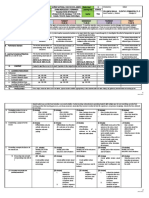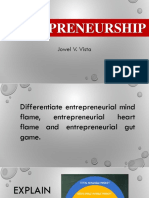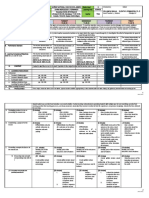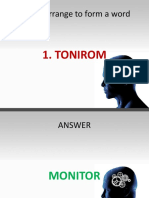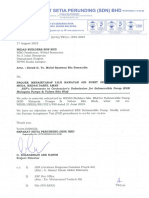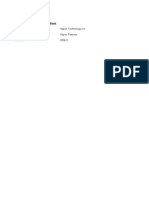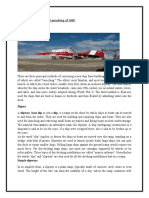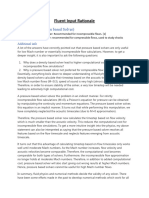0% found this document useful (0 votes)
42 views87 pagesIntroduction
The document discusses operating systems and system software, defining them as programs that coordinate activities and functions of hardware and other programs. It explains that operating systems perform functions like starting up computers, running applications, managing memory and files, and providing user interfaces and networking capabilities. The document also covers topics like software licensing, different types of operating systems and software, and functions of application software.
Uploaded by
Jowel VistaCopyright
© © All Rights Reserved
We take content rights seriously. If you suspect this is your content, claim it here.
Available Formats
Download as PDF, TXT or read online on Scribd
0% found this document useful (0 votes)
42 views87 pagesIntroduction
The document discusses operating systems and system software, defining them as programs that coordinate activities and functions of hardware and other programs. It explains that operating systems perform functions like starting up computers, running applications, managing memory and files, and providing user interfaces and networking capabilities. The document also covers topics like software licensing, different types of operating systems and software, and functions of application software.
Uploaded by
Jowel VistaCopyright
© © All Rights Reserved
We take content rights seriously. If you suspect this is your content, claim it here.
Available Formats
Download as PDF, TXT or read online on Scribd
/ 87

















